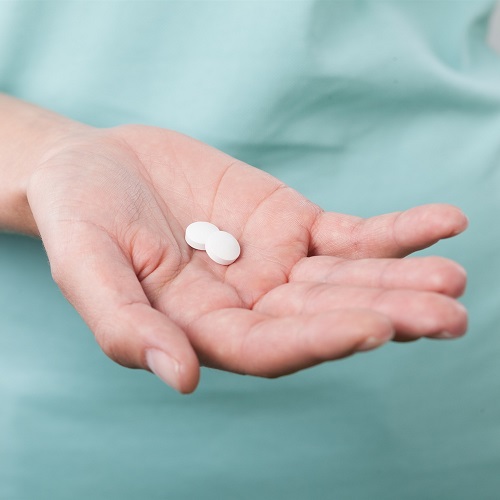Assisted Reproductive Technologies (ART) can be used to overcome nearly all forms of infertility and refer to specialized medical procedures intended to increase the chance of becoming pregnant. All treatments have one goal in common: to support sperm and eggs so that they have a higher possibility of fertilizing and forming an embryo, ultimately leading to the birth of a healthy baby. Our Treatments explained
A semen analysis involves studying a freshly ejaculated semen sample and is typically part of the thorough investigation of an infertile couple. The test is conducted at the Fertility Clinic by an embryologist. Since male infertility accounts for approximately 40-50% of infertility cases, undergoing a semen analysis is essential and serves as a prerequisite for any further treatments or procedures.
This procedure is only suitable for couples in which the male partners are fertile (Normal Semen Analysis), and the female has at least one patent Fallopian tube. Fertility drugs are given to stimulate ovarian activity in women who are not ovulating normally.
The female partner will receive medication to induce ovulation. Close to ovulation the male partner will produce a semen sample. Sperm are washed, prepared/concentrated to select the best sperm population. The gold medal swimming sperm is loaded into a catheter (a fine plastic tube) and will then be injected directly into the uterus near the time of ovulation. Intrauterine Insemination with donor sperm Intrauterine insemination refers to a process of placing donor sperm directly into the woman’s reproductive tract. The female partner will receive medication to induce ovulation. The DONOR sperm are washed, prepared concentrated to select the best sperm population.
The female partner will receive medication to induce ovulation. She will undergo an aspiration which is a minor surgical procedure done at the clinic. The male partner will produce a semen sample just before the egg aspiration. Sperm are washed, prepared/concentrated to select the best sperm population. Eggs are then fertilised in the laboratory and the resulting embryos are transferred to the womb through Embryo Transfer (ET).
The female partner will receive medication to induce ovulation. She will undergo an aspiration which is a minor surgical procedure done at the clinic. The male partner will produce a semen sample. Sperm are washed, prepared/concentrated to select the best sperm population. ICSI is performed where the main cause of infertility is male factor (men with very low sperm counts or with non-motile sperm), as it requires only a single healthy sperm for the injection directly into each of the mature eggs retrieved by aspiration. Eggs are then fertilised in the laboratory and the resulting embryos are transferred to the womb through embryo transfer (ET)
There has been a move towards reduction in the number of embryos transferred therefore an increasing need to optimise cryopreservation of surplus embryos. At Midstream Fertility Clinic we do blastocyst vitrification. During an IVF/ICSI cycle surplus embryos can be cryopreserved and stored for later use.
It allows a woman’s reproductive capacity to be postponed for as long as she wants, with the same potential as at the point when the oocytes are vitrified. With the vitrification of oocytes, women can reach middle age without experiencing any significant decrease in their capability to conceive a child in the future. Who Could Benefit From Egg Vitrification? Where is the sperm? Couples don’t get married or commit to each other as early as they once did, so again this means that pregnancy is being postponed until later in life. If you are diagnosed with cancer; you may wish to use egg vitrification as cancer treatment could damage your eggs. You may have a family history of early menopause, in which case it could make sense to choose egg vitrification.
Semen can be used successfully for an indefinite period after cryopreservation. Why do we do semen cryopreservation? It can be used for sperm donation where the recipient wants the treatment at a different time or place, or as a means of preserving fertility for men undergoing vasectomy or treatments that may compromise a man’s fertility, such as chemotherapy, radiation therapy or surgery.
PROCEDURES

Semen Analysis (SA)
A Semen Analysis provides important information on a number of issues related to male fertility.

OVULATION INDUCTION (OI)
One of the first options in our specialist treatment of infertility is Ovulation Induction.

INTRAUTERINE INSEMINATION (IUI)
Intrauterine insemination refers to a process of placing sperm directly into the woman’s uterine cavity (into the womb).

IN VITRO FERTILIZATION (IVF)
Unlike IUI where fertilization occurs within the body as with natural conception, with IVF the eggs and the sperm are collected and fertilization takes place outside the body within the laboratory.

Intracytoplasmic Sperm Injection (ICSI)
This procedure is a micromanipulation technique done by the embryologist under a high powered microscope.

VITRIFICATION OF BLASTOCYST (DAY 5 EMBRYO)
Vitrification is a technology that is used to freeze a blastocyst so that they can be stored for later use.

VITRIFICATION OF OOCYTES (EGGS)
The vitrification of oocytes is one of the techniques used in preserving fertility.

SEMEN CRYOPRESERVATION
Semen cryopreservation (commonly called sperm banking) is done to preserve sperm cells.
